
|   |

|   |
A creative collaboration between dance and Kalari - Dr. S.D. Desai e-mail: sureshmrudula@gmail.com Photos: Gaurang Anand March 21, 2022 We know Kalaripayattu as a martial art form of attack and defence, both fierce, in warfare. D Padmakumar's Pappan Dance Company (PDC) and Bijal Haria's Parampara Academy of Performing Arts' (PAPA) joint production Angapravah (Tagore Hall, Ahmedabad,13th March) got spectators to realize that the physical prowess of the traditional martial art form has as its basis immense mental and spiritual powers and that dance can benefit from it. 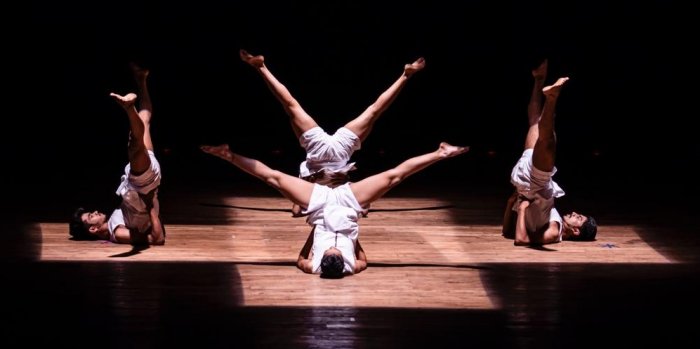 PDC students in Kandisa 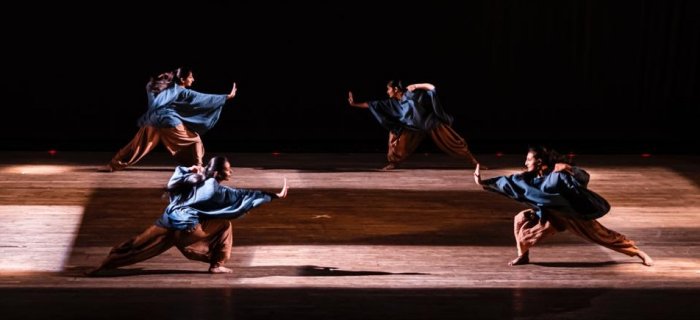 Bijal Haria and students The six dainty pieces seen and heard as part of Angapravah are anchored by a yearning - yearning to reconnect with nature, the source of life and its sustenance. Indian Ocean's Kandisa, the evocative opening segment, sets the tone. Rendered full-throated in dedication, it is an invocation and praises the Supreme Being in all humility. It remains the leitmotif all through. Padmakumar did a lyrical solo Vismaya and a contemplative duet Mask with one of his trainees. The remaining four segments presented his trainees in a visual interaction with Bijal Haria and her dance students at Parampara. Remarkably, with Jayan Nair's insights and Akash Bhatt's innovative instrumental rhythm, music - which except for Kandisa was original - and inbuilt silences, together grew integral to all the units. 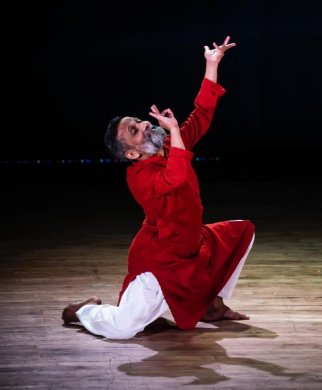 Padmakumar in Vismaya An informed collaboration significantly contributed to the success of Angapravah. Even within the basic collaboration between PDC and PAPA, Vanita Jayan of Nritya Kala Kendra (Dir. Maheswari Nagarajan) was welcomed to choreograph Vismaya and Suraj Kurup, a professional voice talent, as Sutradhar. It was refreshing that, in keeping with the thematic dignity, with a fine balance between rhythm and silence, the musicians avoided cacophony and the Sutradhar (Suraj), even as he quoted Sanskrit words and shlokas, built an integrated narrative. All said, in its concept and presentation, it is Pappan all the way. In his solo he marvels at the bliss and beauty, the Vasudha, unstained with civilizational grossness, offers in profusion. He sees, breathes, smells, touches, listens and is all wonder at the buds turning to flowers, their permeating fragrance, the invisible life force that has creepers rise and the refreshing inimitable music of silence. He takes in the essence of it all - drinks life to the lees! In the duet Mask he unmasks the unnaturalness the civilized man wears. The heart wants him to go to the soul and be spontaneously responsive; the mind has him follow the dos and don'ts imposed all through life. 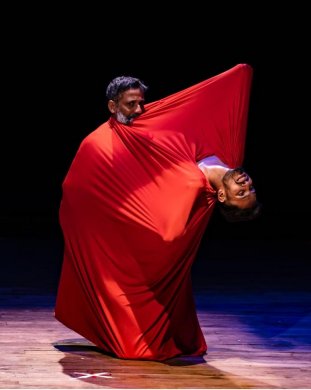 Padmakumar and Dhruval in Mask The nucleus of this mystifying inward world luxuriating in bliss and beauty is within each one of us. To tap it, we need to withdraw like a tortoise our distracting connect with the senses giving transient pleasures - those of success, pride and a sense of superiority, for example - and be intrinsically empowered. The unassuming Kalari expert, even as he works with a small modest group (Dhruval, Joel and Krithik among them), explores through Angapravah the possibility of a creative collaboration with dance. Bijal, a Kuchipudi dancer and research scholar, is right on track. With a few of the Parampara dancers (herself, Pratika, Nihira, Ananya, Nandini, Mitra) and a few more from Nritya Kala (Divya, Brindali, Akriti), she welcomes the enriching exploration. Dance seeks a connect with the spirit, which resides within the body. Kalari helps the body shed its flighty tendencies, be steady with concentration and get the mind to turn inward right to the core of being, the seat of the soul. Dance-Kalari collaboration can help ward off distractions to a spiritual pursuit, though in a modest way, the production brings to the fore other complementary gains of the collaboration. With practice, dancers acquire flexibility of their limbs and suppleness of movement. That is why the performance is titled Angapravah. With conviction they get a feel of withdrawal and convergence. They realize how pleasurable the creative process becomes. They drop inhibitions, both physical and mental. And, most importantly, they find getting connected with the inner self and communicating their findings more easily, pleasingly and clearly. 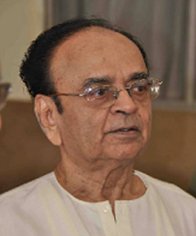 Dr. S.D. Desai, a professor of English, has been a Performing Arts Critic for many years. Among the dance journals he has contributed to are Narthaki, Sruti, Nartanam and Attendance. His books have been published by Gujarat Sahitya Academy, Oxford University Press and Rupa. After 30 years with a national English daily, he is now a freelance art writer. |